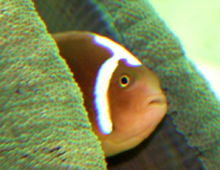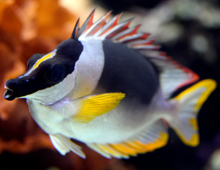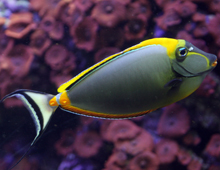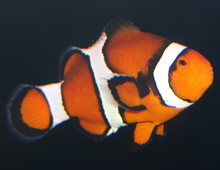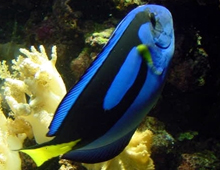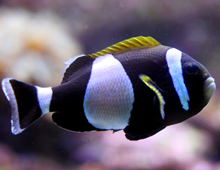
The ten species of swallowtail angelfish stand out among the marine angelfish family. Instead of staying close to the reef, and feeding on coral polyps and other stationary organisms, swallowtails consume plankton in the water column. While the sexes of other angelfishes are colored alike, male and female swallowtails look very different from each other. Only described to science in 1970, this species occurs off Japan and Australia, and far out into the Central Pacific, but is absent from the Indo-Pacific. Only the male has stripes.


